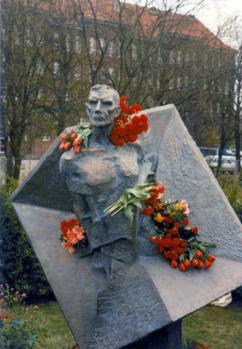History after 1945
Many years passed after the Second World War before the murders of the children, their carers and the Soviet prisoners were noticed by a larger public. The course of events was reconstructed in the Curiohaus trials in 1946 and the perpetrators who had been arrested up to that point were sentenced to death, but there was no public commemoration of the victims. Only after years of pressure from former prisoners of the Neuengamme concentration camp did the Hamburg Senate have a commemorative plaque erected for the children and their carers in the school building on Bullenhuser Damm in 1963. Exact knowledge of the medical experiments was provided by the trial in 1966 in the GDR against the doctor responsible, Dr. Kurt Heissmeyer, who lived in Magdeburg after the end of the war.

In 1979, a more intense public debate about the crime on Bullenhuser Damm began. The journalist Günther Schwarberg had found relatives of five murdered children and reported on the crime and the victims in a series of articles in "Stern" magazine. Relatives of the children from abroad also took part in a memorial service on April 20, 1979. Together with the Hamburg initiators of the commemoration, they founded the association “Children from Bullenhuser Damm e. V.". Their goal was to keep the memory of the victims of the crime alive and to bring former SS Hauptsturmfuhrer Arnold Strippel to justice. In 1980, the association set up the Bullenhuser Damm memorial and a first exhibition in two basement rooms made available by the school authorities. In 1983, a rose garden was created. It was not until 1985 that a memorial was erected in the rose garden for the Soviet prisoners who were murdered on the same day as the children and their carers. The memorial was operated by the association until 1999, since then it has been a branch of the Neuengamme concentration camp memorial. It has become an important place of remembrance in Hamburg. To this day, there are still unanswered questions about the identities of the children and the Soviet prisoners. The research is not finished.